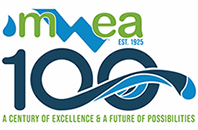
Advanced Biological Wastewater Treatment Process Model Training Series
The Academy is designed to update practicing process design engineers, regulators, and operators in the use of wastewater process design models to simulate the impacts of changes in waste stream and process design. Training in process modeling will help to establish a common understanding of the tools for evaluating technologies to improve plant/facility operations.
This course is virtual and takes place 1 day a week for 13 weeks. Live virtual attendance is required. Each week is a 1.5 hour webinar (odd weeks are lectures, even weeks are breakout working groups and discussion)
Continuing Education
This virtual series will provide 1.6 technical wastewater CECs and 16 PDHs.
Process Model Training Series Objectives by Module
** ALL modules are virtual **
Module 1 - Introduction & Wastewater Characteristics
- Describes wastewater components necessary to properly model a wastewater treatment process
- Explores methods to make necessary measurements
- Compares these measurements to conventional BOD, TSS and VSS analyses
Module 2 - Relevant Microbial Processes
- Explores fundamental microbial process that form the basis for process models including carbon oxidation and cell decay, nitrification, denitrification, and biological phosphorus removal
Module 3 - Process Stoichiometry & Kinetic
- Examines the characterization of Stoichiometry ("how much") and how the processes occur
- Examines the characterization of kinetics (how fast) and how the processes occur
- Describes how proper characterizing of stoichiometry and kinetics is essential so that the model can predict bioreactor volumes, sludge production, and process oxygen requirements along with process performance
Module 4 - Building & Calibrating Process Models
- Identify steps involved in building a process model in SUMO
- Evaluate WRRF data and perform appropriate assurance/quality control for use in process modeling
- Identify steps for key calibration for steady state and dynamic conditions
- Interpret results of a process simulation
Module 5 - Modeling Real Processes
- Demonstrate processes identified in Module 4 utilizing real plant data
Module 6 - What Models Can & Cannot Do
- Examine the roles a model can play in the lifecycle of a plant (from process training to real-time control and digital twin development)
- Examine modeling processes other than activated sludge
- Explores limitations of models
Module 7 - Wrap-Up & Conclusion
